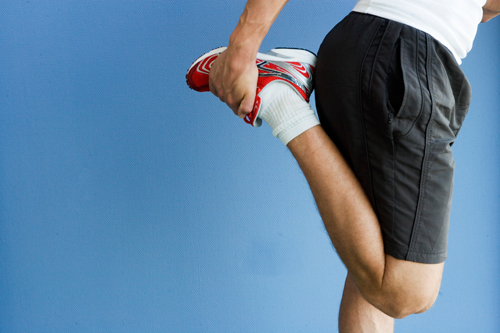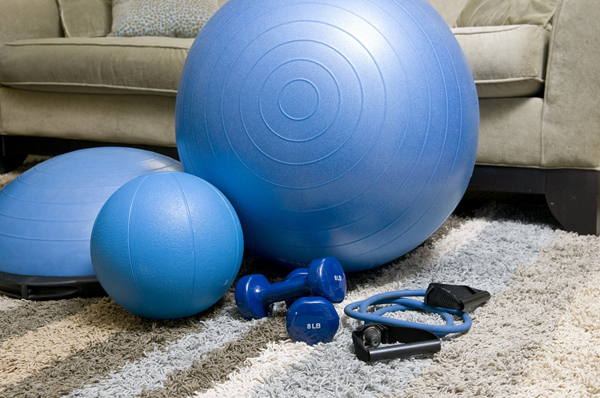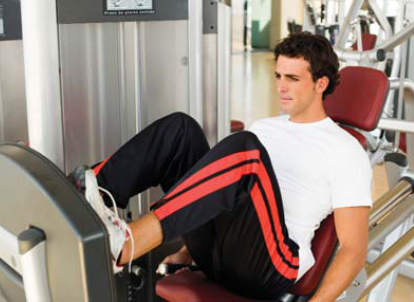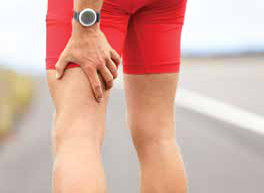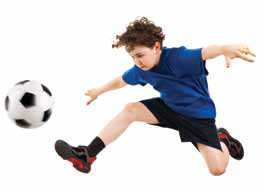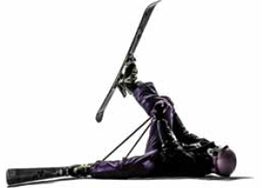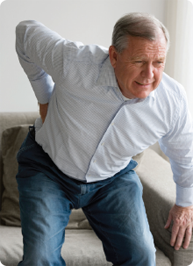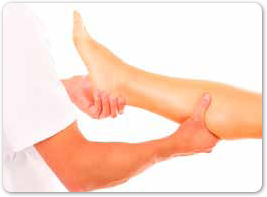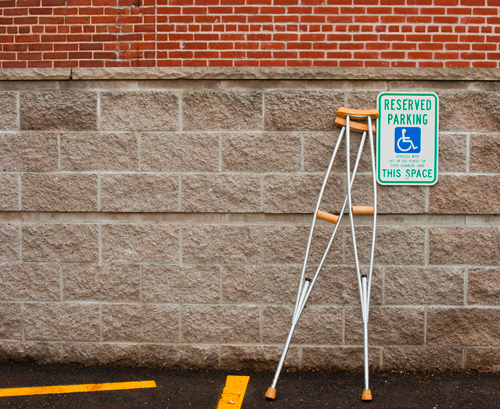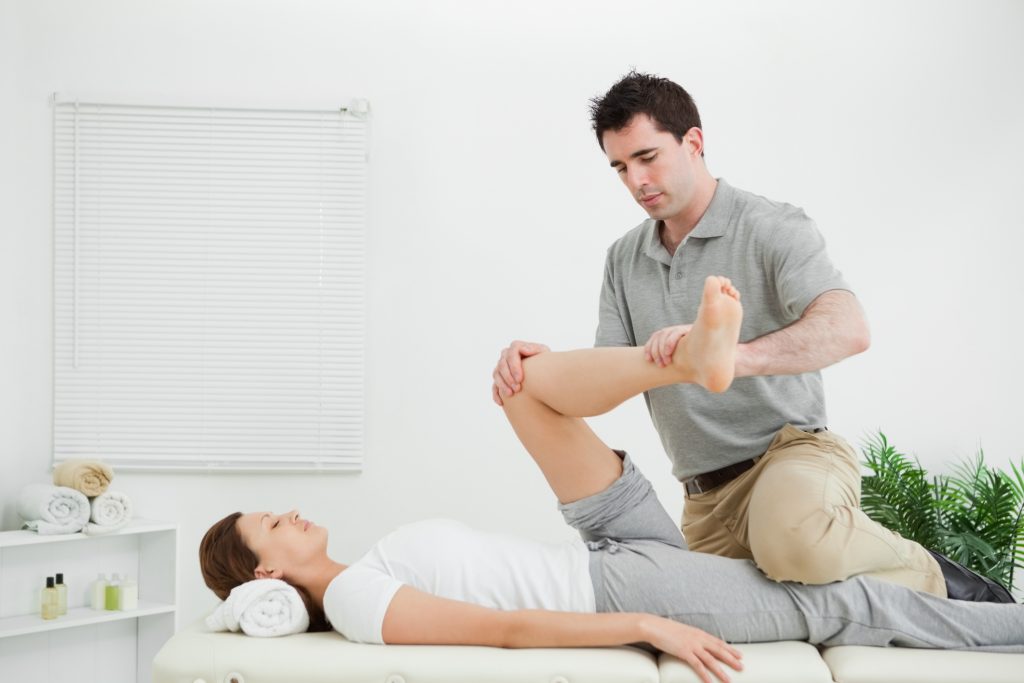From Our Blog
Lower Body – Leg
How to Prevent Shin Splints
Shin splints” is the common term for medial tibial stress syndrome, the inflammation of the thin tissue (periosteum) that covers the shinbone (tibia). You feel the pain of shin splints in the lower leg muscles and connective tissues that attach to the tibia through the periosteum. On occasion there may be mild swelling or redness […]
Jump on Treating Osgood-Schlatter Disease
Osgood-Schlatter disease (syndrome), a common cause of knee pain in as many as one in five children and young athletes, especially boys, 10 to 15 years of age, usually occurs after a period of quick growth coupled with intense physical or sporting activity. Children who participate in running and jumping activities experience a greater strain […]
Working Your Way Through Shin Splints
Occurring in the front of the outer leg, shin splints result from inflammation to the posterior tibial tendon and related tissues . They commonly happen to runners or those who walk vigorously. Symptoms include pain in the front of the outer leg below the knee, ranging from dull discomfort to significant pain that increases with […]
How to Prevent and Treat a Stress Fracture
Although it’s usually so small that it can’t be detected with conventional x-rays, a stress fracture is a very real crack in a bone. Most stress fractures occur in the tibia or fibula (lower-leg bones), the metatarsal or navicular bones of the foot, or the heel. The fracture develops over a period of days or […]
Strong Quads Help Fight Osteoarthritis
Many individuals experience pain from osteoarthritis, also called degenerative joint disease, the “wear and tear” version of arthritis. It can occur in any joint but is especially common in the knee. Your knee is a complex joint where the thigh bone (femur), a lower leg bone (tibia) and the kneecap (patella) come together. These bones […]
Physical Therapy Following a Femoral Fracture
Physical therapy can help with most fractures, but it is especially important if you have suffered a fracture of the femur, which runs from the hip to the knee. This incredibly strong bone typically requires significant force or direct trauma to break. A femoral fracture often requires surgery to place the bones back into position. […]
Curing Your Hamstring Injury
Many people who have played sports that require running—like soccer, football, field hockey and basketball—may have felt a twinge in the back of the leg, followed by pain of varying degrees and a tightening of the muscle. These symptoms are indicative of a hamstring injury. Rest assured, a full recovery from these types of injuries […]
Don’t Get Apoplectic Over Apophysitis
Your preteen soccer player comes home from practice complaining of knee pain, and there is a tender swelling at the top of his shin. Your 8-year-old starts limping and talking about a gradually increasing ache in his heel. In both cases, the culprit may be apophysitis, a relatively common condition where an apophysis—a type of […]
Recovering from a Torn Medial Collateral Ligament
No one wants a knee injury, of course, but if you have one, a torn medial collateral ligament (MCL) is one of the least serious. This is because MCLs will often heal on their own—meaning no surgery and a full return to activities, even when dealing with the most severe tears. Located on the inside […]
Is Piriformis Syndrome Getting on Your (Sciatic) Nerve?
Characterized by tingling, numbness and pain deep in the buttock, piriformis syndrome describes what happens when the piriformis muscle, a muscle located in the buttocks near the top of the hip that stabilizes the hip joint and enables us to walk, shift our weight from one foot to another and maintain balance, compresses the sciatic […]
Lengthening Pain Relief for Short-leg Syndrome
Do you ever feel unbalanced when you walk or run? Have you ever noticed that you look “tilted” to one side in photos? You may have short-leg syndrome, a common condition in which one leg is shorter than the other. Short-leg syndrome can result from either anatomical or functional causes. Anatomical short-leg syndrome can be […]
Walking Away from the Pain of PAD
Bad leg circulation can make walking seem like a dreaded task, rather than a simple mode of transportation. For the millions of people who suffer from peripheral arterial disease (PAD), walking even short distances can be painful. Since this type of pain goes away when you are at rest, it can be tempting to avoid […]
Break a Leg? Get Up and Walk!
The benefits of getting out of bed and moving as soon as possible after surgery are well known. Now, doctors often prescribe the same therapy when treating leg fractures. Get up. Get moving. And with supervision, start stretching and putting weight on that broken leg. The leg contains three long bones—the femur or thighbone, the […]
Pulled Hamstrings: Stretch Your Way Back
Running along the back of the thigh from the pelvis to the shin, the hamstring muscles are responsible for bending the knee, along with moving the hip and other lower extremities. Thus, when a hamstring is strained, or pulled, the rest of the body can be affected. With a hamstring strain, pain and mobility indicate […]
Get a Leg Up on Iliotibial Band Syndrome
Lorem ipsum dolor sit amet, consectetur adipiscing elit. Nam vitae orci non ligula rutrum dictum non efficitur sapien. Praesent varius hendrerit dignissim.
Subscribe to Monthly Health & Wellness Tips


